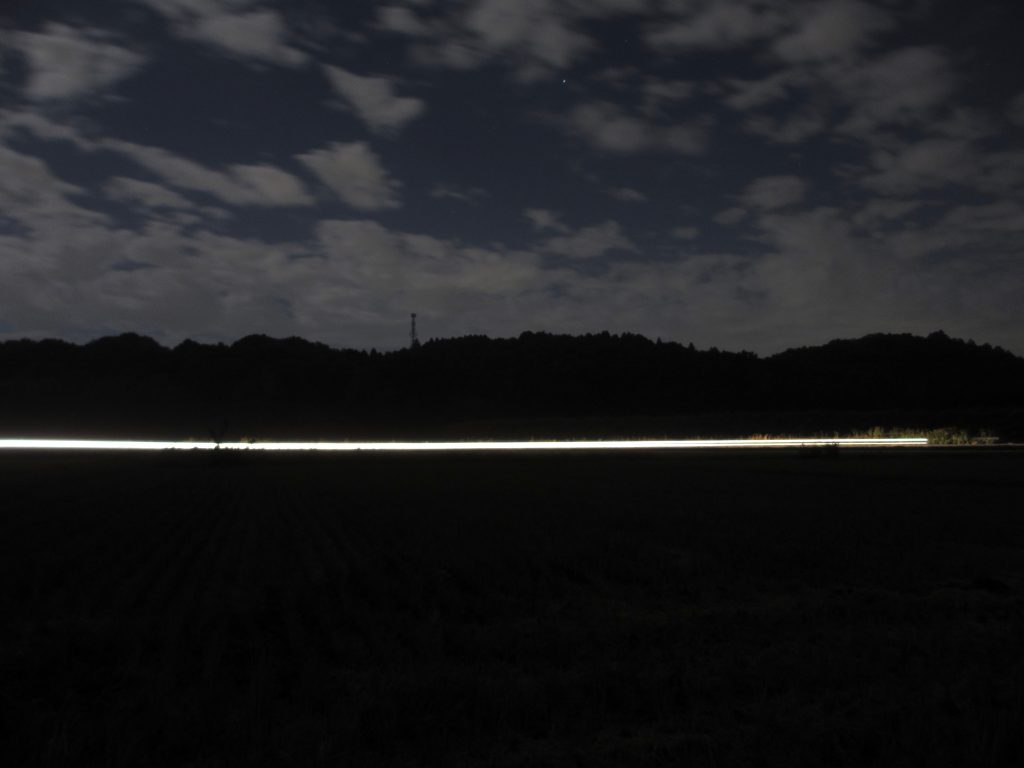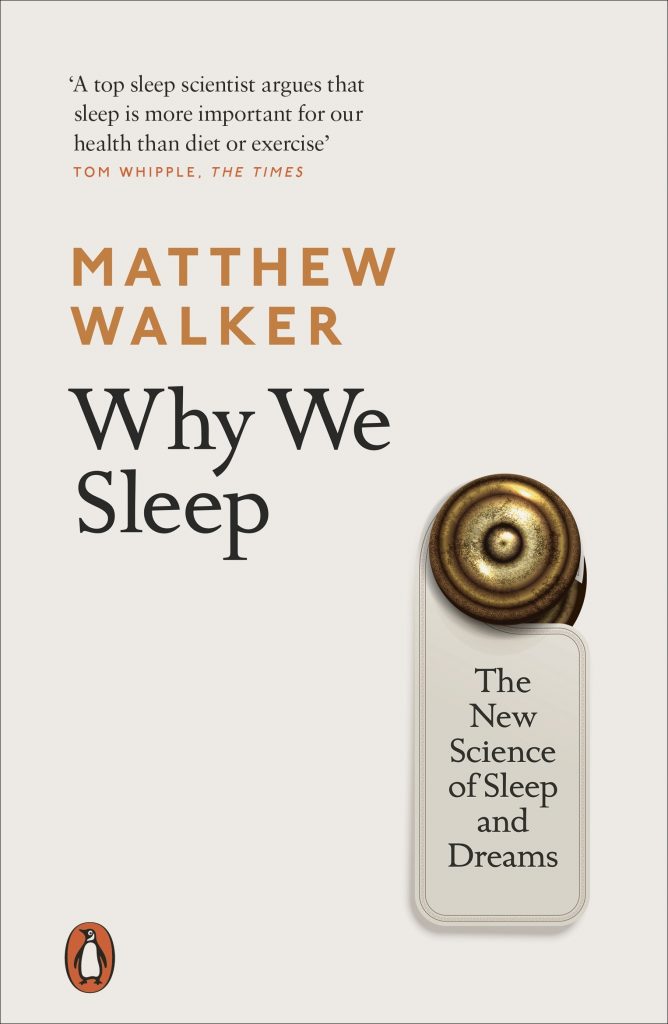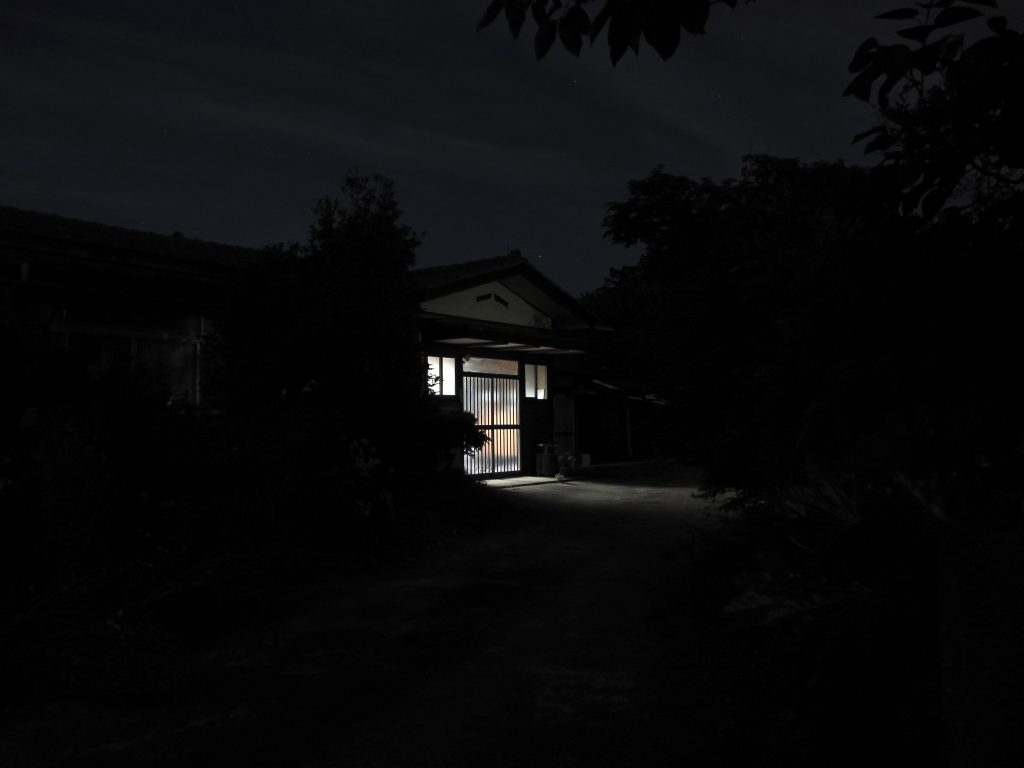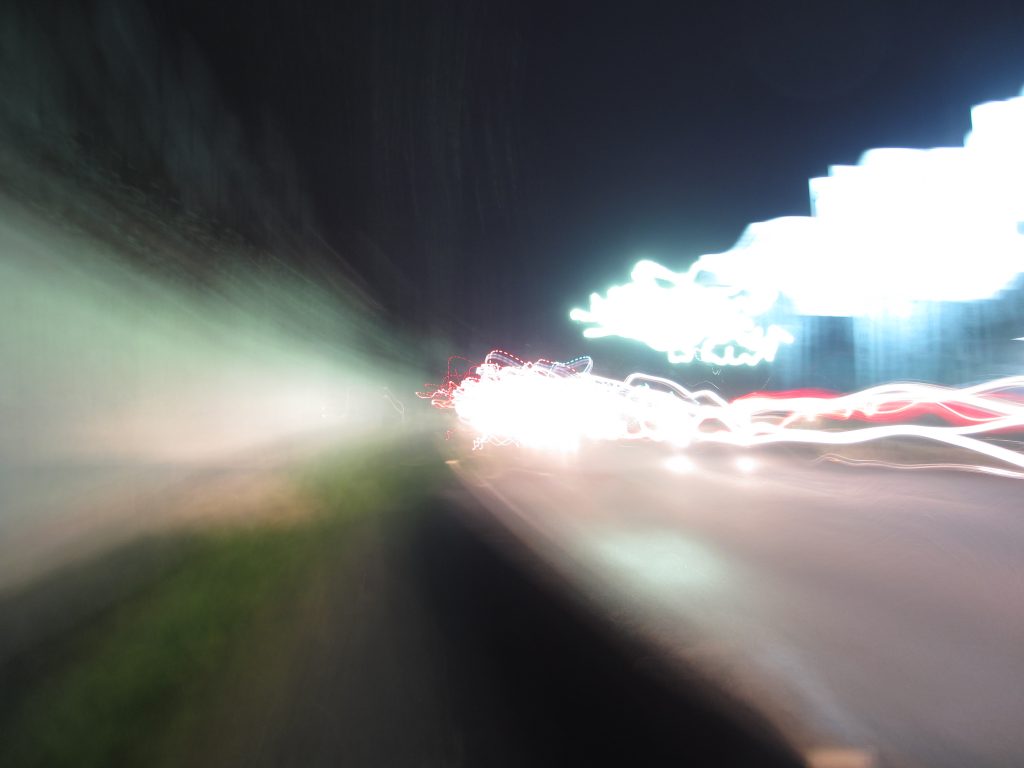
Over the past few years, more than a couple of friends have discussed with me their own battles with insomnia. Based on personal experience, the following is an edited version of the advice I have given them. A lot of the basics are borrowed from Sleepio, which I have recommended on these pages before.
1) The Golden, Number One, Disobey-at-Your-Peril rule is:
If you are unable to sleep, do not stay in bed. Instead, get up and go to another room.
Sleepio recommends fifteen minutes as a cut-off point, but I find there is usually a moment when despite your best efforts, you realise that sleep is not going to come (basically when you find yourself saying “Fiddlesticks!”), and whether that is five or thirty minutes after you went to bed, that is when you need to get up and go to another room.
2) When you do, there are two things you are aiming for: firstly to distract yourself from your worries about the fact that you cannot sleep and about whatever you have to do the following day, and secondly to calm down and relax. My tried-and-tested (although not guaranteed to be successful) techniques at this point are:
a) Progressive relaxation
After well over four years I still do this almost every single night. Instructions are as follows: i) Lie in a darkened room on the floor/sofa/spare bed with your arms by your sides. Breathe deeply and slowly. ii) After five deep breaths, clench your fists. After five more deep breaths, unclench them and take five more deep breaths. iii) Hunch/shrug your shoulders right up towards your ears. After five deep breaths, un-hunch (de-shrug?) and take five more deep breaths. iv) Close your eyes tightly while at the same time clenching your teeth. After five deep breaths, relax and take five more deep breaths. v) Pull your toes up towards your knees to stretch your calf muscles. After five deep breaths, relax and take five more deep breaths.
Believe it or not, this will take about fifteen minutes in total. If you are really lucky, you may fall asleep part way through. If not, the progressive relaxation should at least calm you down and reduce your heart rate.
One thing I also do is to try and keep my eyes open (apart from during step iv when I am deliberately shutting them, of course), and subsequently finding that you are unable to do so can be another sign that the progressive relaxation is having the desired effect. The more time has gone on, the less bothered I have been about counting the number of breaths I take, to the extent that nowadays, my progressive relaxation sessions sometimes go on for about thirty minutes. “But you’re wasting valuable time keeping yourself awake!” I hear you say. Well, no: one of the secrets of overcoming insomnia is not to be in a hurry to get to sleep (being in a hurry to get to sleep is, after all, a contradictory situation).
b) Yogic breathing
The technique that I found is called pranayama, and is another way of forcing you to concentrate on breathing deeply, in order to calm you down and distract you from your thoughts. Again, for this I lie down in a darkened room and try to keep my eyes open.
Instructions are as follows: i) Cover one nostril with a finger and breathe out and in through the uncovered nostril. ii) Switch nostrils and breathe out and in through the one that is now uncovered. iii) Repeat.
I find that I get bored with pranayama more quickly than progressive relaxation — usually after ten minutes or so — but a friend of mine insists that it works because (and I quote) it “floods the brain with oxygen and makes you sleepy.” Whether or not this is the case, the aim is breathe as slowly and deeply as possible.
c) Guided meditation
This is where a smartphone comes in handy, as you can lie on the floor/sofa/kitchen table in the dark and put your headphones on, or listen via the internal speakers with the volume turned down low (even though the following are videos, I only ever listen to the audio). It has to be said that most of the guided meditation videos on YouTube are rubbish and/or too long. Three that I have used a lot, though, are:
There are also apps: for example, Pzizz. You have to pay to get a proper Pzizz subscription, but even if you try their basic, free service, you can set up and keep one audio file to your own specifications. When I was using it a couple of years ago, my file was fifteen minutes long, with a male voiceover that faded out after 10 minutes, and much better than most of the stuff that was available free of charge.
d) Listening to relaxing music
The key here — at least for me — is not to listen to anything with lyrics or a catchy tune. For example, so-called “binaural beats” are good (search on YouTube and you’ll find hours and hours of them), as is Sleep Radio, an online radio station designed especially for insomniacs.
e) Reading, sewing, doing jigsaw puzzles etc.
As a rule I prefer not to switch on the light when I go downstairs or into another room, but I do sometimes read a book — which in itself is often a good way of making me sleepy — and similarly meditative (i.e. monotonous) activities like this do require at least some light.
f) As a last resort, I very occasionally (e.g. at about two or three in the morning when I am desperate and have been trying and failing to get to sleep for several hours) go for a walk or even a drive.
3) When you have relaxed for ten or fifteen minutes, or when you feel sleepy again, you can go back to bed. However, if you try to go to sleep for a further fifteen minutes or so and cannot, get up, go to another room and repeat Step 2.
4) The next thing you should be thinking about is what is known in the insomnia biz as “sleep hygiene.” That is, creating an environment and routine that is conducive to sleep.
a) If possible, do not drink caffeine or alcohol and if you do, do not have them after about lunchtime.
As the sleep expert Matthew Walker points out, the quarter-life of caffeine is around ten hours. In other words, if you drink a cup of coffee at midday, a quarter of the caffeine that it contains will still be in your system at ten o’clock that night, which is not exactly conducive to sleep. (Having said that, I did once rather comically take two Day Nurse tablets at about 7.30 p.m., which I realised upon reading the packet contained the equivalent of a strong cup of coffee. It was the evening before what was, for an insomniac, a high-pressure day — I was due to travel to Tokyo to meet a friend who was visiting from the U.K. — but incredibly, having tried and failed to make myself throw up, I did manage to get to sleep that night.)
Walker also points out that while alcohol can initially knock you out, it reduces the quality of your sleep, so that you are more likely to wake during the night, wake up early the next morning, and feel run down the next day.
b) Avoid eating late, eating rich or sugary food, and eating a large amount of food for dinner
I have dinner at around six o’clock, with no dessert, and try to make breakfast and lunch my main meals of the day. Also, I think it is a good idea to reduce the amount that you eat for dinner. When I stopped eating carbohydrates (rice, potatoes, bread, pasta, noodles, and so on) for dinner, my ability to get to sleep first time improved almost immediately, and more than three years later, I still avoid carbs in the afternoon and evening.
c) Do not drink too much in the evening, even water
This is to avoid having to go for a pee in the middle of the night. Even if you get to sleep first time, getting back to sleep after a nighttime trip to the toilet can be a tough job for an insomniac.
d) Do not watch too much TV or use smartphones and computers in the evening
Blue light from TV and computer screens is bad for sleep because it mimics daylight. I used to restrict myself to an hour of TV in the evening and nowadays do not watch at all. On both my iPhone and MacBook, I use the blue light reduction option called Night Shift. I also turn the brightness way down if I do have to use them. Apps like F:lux do a similar job, giving your screen an orange tint during the evening.
It is also important to have low lighting around the house. Most Japanese homes have harsh and powerful ceiling lights with flourescent bulbs, which are another source of undesirable blue light, so a couple of years ago I invested in a standard lamp and fitted it with low-power, tungsten-style LED bulbs.
e) Keep your bedroom dark and at a decent temperature
In other words, not too hot and not too cold. During the oppressive heat of Japanese summers, I often sleep downstairs in the living room, where it is marginally cooler than my bedroom. In winter, on the other hand, we have no central heating, but I have found that an electric blanket lessens the shock of climbing into an ice-cold bed, and makes me feel relaxed and cosy even if the room temperature is in single figures.
Also, and If possible, consider sleeping in a separate bedroom from family members, as I have from Mrs. M and the children for the past few years.
f) Do not do strenuous exercise late in the day
However, light exercise — for example, walking or yoga — is OK. Going for a walk every evening after the children went to bed was one of the most effective anti-insomnia measures that I tried, as it was meditative, and had the added benefits of preventing me from falling asleep in front of the (or watching too much) TV, and allowing me to take photos and listen to music and podcasts.
g) Do not nap during the day or take a siesta
Like many insomnia treatment programmes, Sleepio recommends saving up your fatigue for when you go to bed at night, and I still find that if I nod off on the sofa during the evening, I am less likely to be able to get to sleep when I am in bed.
h) Go to bed and get up at the same time every night, even on weekends, and try and have the same routine every night before you go to bed
My own routine has changed and developed over the years and even now I am constantly tweaking it. At the time of writing, I fold up the laundry and dry the dishes after work, eat between 6 and 7 p.m., sometimes read a book to the children, take a shower at about 7.30, read an e-book on my iPhone (using Night Shift and with the brightness turned down, of course), help the children take a shower, clean their teeth, sometimes read to them in bed at about 9, go to my bedroom or the living room and read until I feel sleepy, and am usually in bed and asleep by about 9.30 p.m. (In years gone by and before I became an in-bed-before-ten/rise-at-four kind of guy, I would put the children to bed at 9 p.m., go for a walk, watch TV, read a book, do progressive relaxation, and get into bed at 11, all at the same time and in the same order, every night of the week.)
Unlike me, you may have a social life of some kind, but whatever your lifestyle, try and develop a pre-sleep routine and stick to it, even if it is only for the final hour or so before you go to bed.
i) Apart from sex, do not do anything in bed other than sleep
This includes reading (although as I said above, I do read in bed these days — after all, rules are made to be broken, right?), listening to music, watching TV, eating breakfast, building Lego sets, whatever. If you want to read, use a smartphone, or just relax, do not do these in your bedroom.
k) Finally, do not “clock-watch” during the night
I have a clock in my bedroom, but only look at it when I need to check if it really is time to get up in the morning.
5) If your insomnia is an ongoing problem and you are serious about curing it, you need to try what Sleepio calls “sleep restriction.”
The purpose of sleep restriction is to discover how much sleep you really need and to limit the time you spend in bed to that amount only.
To do this, keep a sleep diary for a few weeks. Record the time you spend asleep versus the time you spend in bed. (Because it is not a good idea to clock-watch, you will have to rely on your own rough estimates, but it is surprising how accurate these can be.) The average time that you spend asleep is your “sleep window.” So for example, when I signed up with Sleepio, my sleep window was 5 hours 45 minutes, while my “sleep efficiency” was poor, as I was spending about eight hours in bed every night.
Once you have calculated your sleep window, that becomes the set amount of time you spend in bed every night, although the difficult — and very important — thing is that even if you do not sleep well, you must not sleep late the following morning or go to bed early the following night. This may sound crazy, but it really works, as it forces you (and your body/body clock) into a strict, efficient routine.
For example, once I had calculated my sleep window, Sleepio rounded that up to allow me six hours in bed every night. Obviously going to bed at 11 p.m. and getting up at 5 a.m. was tough to start with, but I soon got to the point where I woke up naturally at that time most mornings, even if I had not set the alarm. The only times I allowed myself any extra time in bed were when I did not get to sleep until, say, 4 a.m., or when I had not slept at all the previous night. Other than that, I went to bed and got up at pretty much the same times every single day for a couple of years. Even now I hardly vary my routine, whether it is a work day, the weekend, the summer holidays, a birthday, Christmas, or New Year’s Eve. Also, and while I would like to be able to say that I now sleep for eight hours a night, I still average little more than six. The important thing, however, is that these days my sleep efficiency is much better, meaning that I spend a lot less time staring at the ceiling and frustrated at the fact that I cannot get to sleep.
6) In the long-term, it is also important to keep busy during the day and develop a positive attitude.
Make a list of goals that you want to achieve and things that you want to do. For example, maybe you want to run 10 km, write a book, start a new hobby, learn a new skill, get a new qualification, or travel.
Even if you do not sleep well, resolve to work towards these goals during the day. This will make you feel better about yourself and make you more tired, both of which should help you sleep better the following night.
Personally, I think that exercise — which is known to be one of the best ways of treating depression — can be a great help. After a break of more than a decade, I took up jogging again a couple of years ago and got a real buzz from it (more than I did when I was younger, for some reason).
It is also a good idea to guide yourself towards positive cultural stimuli, so try to read funny books or magazines, watch comedy shows on TV or YouTube, and listen to positive podcasts, radio shows, and so on. Watching or reading too much news and current affairs can have a negative effect, as they tend to revolve around problems, crises, disasters, crime, and the like.
Another thing I would recommend is to have some kind of counselling or therapy. Insomnia is often a sign of underlying stress or psychological issues, and having a sympathetic (and neutral) ear can not only help you to realise what those stresses and issues are, it can also help you develop a more relaxed attitude, and to look at things from a more objective standpoint. I am by no means in a state of blissful happiness these days, but thanks to therapy and the various things I have learned about myself through suffering from insomnia, I am now a lot better at separating my worries in life (whatever happened to me on a particular day and whatever I am supposed to be doing the next) from the short-term, practical worry of whether or not I will be able to get to sleep that night. Even if you cannot solve a psychological problem or resolve an issue that is bothering you, becoming aware of it — and of how it is affecting your behaviour — is the first step along the way to inner peace, well-being, and overcoming insomnia.




